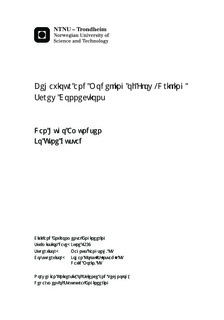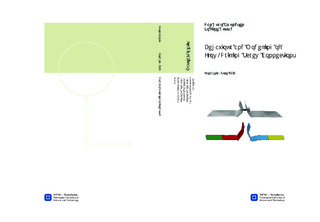| dc.description.abstract | This thesis presents an experimental and numerical study on the behaviour of Flow-Drilling Screw (FDS) connections under various quasi-static loading conditions. The behaviour and fracture of the connections were closely studied by means of tests on simple coupons joined with a single connector and component tests. Single-connector tests were performed on both two- and three-layered specimens. Cross tests in three loading directions, lap-joint tests and peeling tests were conducted for both configurations. The two-layered cross tests were used to calibrate two different macroscopic models. The first model was a point-connector model developed for self-piercing rivets (SPR), while the other was a material model developed for spot welds. Two different assemblies of three-layered cross tests were used to calibrate the SPR model for three-layered FDS connections. All models were validated by simulations of the lap-joint and peeling tests. A component test was performed to validate the two-layered macroscopic models for complex loading situations.In the single-connector tests, shear-dominated loading situations generally produced higher forces than tension-dominated. Failure in the connections were mostly caused by pull-out from the bottom sheet. For the three-layered crosses and lap-joint specimens failure due to fracture of the screw itself, near the screw-head, was observed. In the component, all screws experienced both rotation and one-sided thread stripping.The spotweld model was able to represent the stiffness and maximum force in some tests, but failure occurred too early in all simulations. The macroscopic model developed for SPR connections generally gave a good representation of the results, except under-predicting the force in peeling. The macroscopic model of the three-layered specimens showed some acceptable results, but under-estimated the forces in peeling, and over-estimated both force and displacement for the lap-joint. The macroscopic models gave an acceptable representation of maximum force in the component test, but were not able to accurately represent the stiffness observed in the experiments.To develop a point-connector model for FDS more work is necessary. The SPR model seems reliable for two-layered connections, but a model for three-layered connections requires further calibration, especially for shear-dominated loading cases. The spotweld model shows promising results, but further optimisation of the parameters must be conducted to conclude. | nb_NO |

